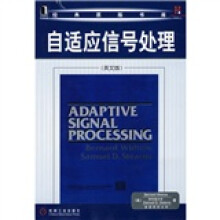LIST OF SYMBOLS
part ⅠGENERAL INTRODUCTION Objectives of Part Ⅰ
1 ADAPTIVE SYSTEMS
Definition. and Characteristics
Areas of Application
General Properties
Open- and Closed-Loop Adaptation
Applications of Closed-Loop Adaptation
Example of an Adaptive System
The Chapters Ahead
2 THE ADAPTIVE LINEAR COMBINER
General Description
Input Signal and Weight Vectors
Desired Response and Error
The Performance Function
Gradient and Minimum Mean-Square Error
Example of a Performance Surface
Alternative Expression of the GradiEnt
Decorrelation of Error and Input Components
Exercises
part Ⅱ THEORY OF ADAPTATION WITH STATIONARY SIGNALS
Objectives of Part Ⅱ
3 PROPERTIES OF THE QUADRATIC PERFORMANCE SURFACE
Normal Form of the Input Correlation Matrix
Eigenvalues and Eigenvectors of the Input Correlation Matrix
An Example with Two Weights
Geometrical Significance of Eigenvectors and Eigenvalues
A Second Example
Exercises
4 SEARCHING THE PERFORMANCE SURFACE
Methods of Searching the Performance Surface
Basic Ideas of Gradient Search Methods
A Simple Gradient Search Algorithm and Its Solution
Stability and Rate of Convergence
The Learning Curve
Gradient Search by Newton's Method
Newton's Method in Multidimensional Space
Gradient Search by the Method of Steepest Descent
Comparison of Learning Curves
Exercises
5 GRADIENT ESTIMATION AND ITS EFFECTS ON ADAPTATION
Gradient Component Estimation by Derivative Measurement
part Ⅲ ADAPTIVE AL GORITHMS AND STRUCTURES
part Ⅳ APPLICATIONS
APPENDIX A A Portable Random Number Generator
INDEX

 缺书网
缺书网 扫码进群
扫码进群





